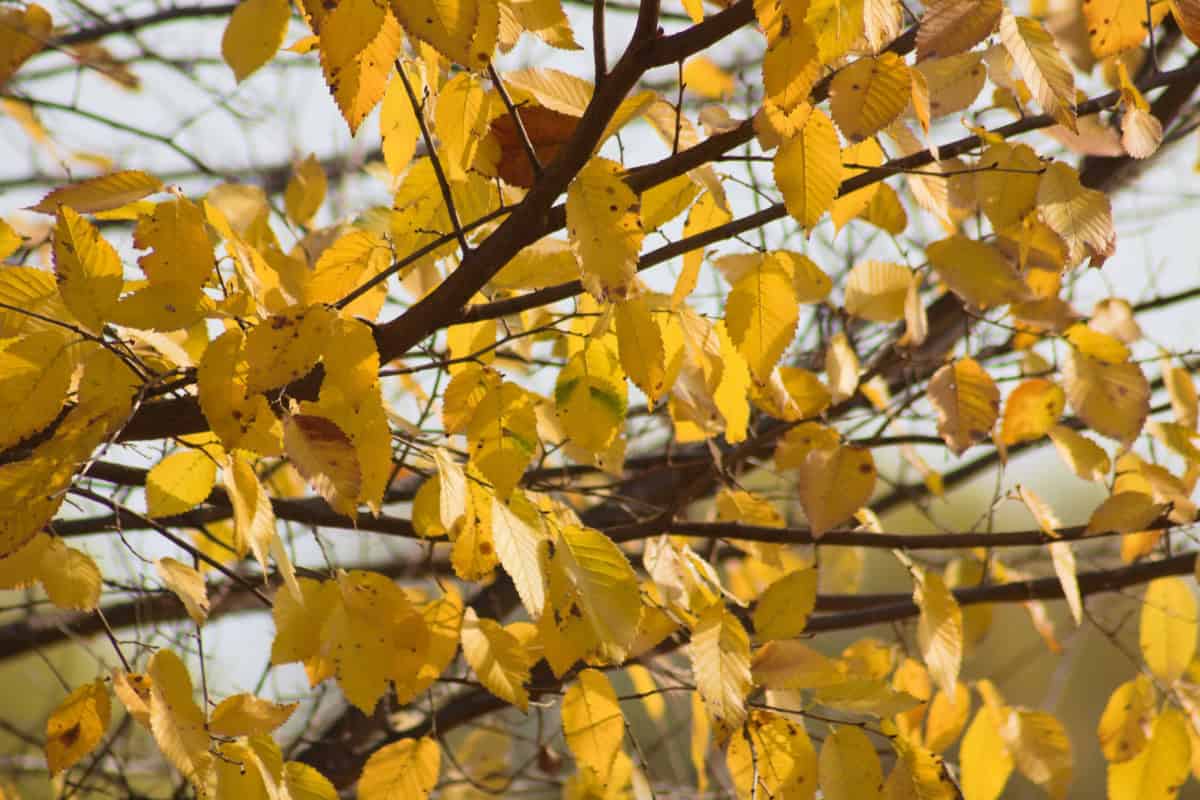
This comprehensive American Elm firewood profile explores one of America’s classic hardwoods, delivering 20,000-21,000 BTUs per cord with reliable heating characteristics and distinctive splitting behavior.
While Dutch Elm Disease has reduced availability, this historic American tree remains an excellent choice for fire pit users seeking dependable performance with unique processing characteristics.
- Quick Reference Stats: American Elm Firewood Profile
- Overview & Identification
- Geographic Distribution
- Burning Characteristics
- Sensory Experience
- Processing & Preparation
- Specialized Uses
- Pros & Cons
- Best Practices & Tips
- Bottom Line: American Elm Firewood Profile
- 🌳 American Elm Firewood Quick Reference Table 🔥
- Related Resources: American Elm Firewood Profile
Quick Reference Stats: American Elm Firewood Profile
- Wood Type: Hardwood (deciduous)
- BTU Rating: 20,000-21,000 BTUs per cord
- Ease of Splitting: Easy to Moderate (3.5/5 scale)
- Seasoning Time: 6-12 months
- Smoke Production: Moderate
- Spark/Pop Factor: Low to Moderate
- Scent Profile: Mild – Clean, slightly sweet aroma
Overview & Identification
The American Elm firewood profile represents a classic piece of American forestry history, offering reliable mid-range heat output with distinctive processing characteristics.
Known for its resistance to splitting along traditional grain lines, the American Elm firewood profile requires specific techniques but rewards users with steady, dependable burning performance.
This resilient hardwood provides consistent heat with moderate smoke production, making the American Elm firewood profile a dependable choice for firewood users.
Common Names: American Elm, White Elm, Water Elm, Soft Elm
Scientific Name: Ulmus americana (family Ulmaceae)
Tree Characteristics: Large deciduous tree reaching 60-80 feet in height with distinctive vase-shaped crown. Features oval, serrated leaves and rough, furrowed bark. Historically dominated American landscapes before Dutch Elm Disease.
Geographic Distribution
Where You’ll Find It: Originally throughout eastern and central United States and southeastern Canada. Now primarily found in disease-resistant populations and smaller groves.
Availability: Limited but steady availability from tree services, storm damage, and disease management.
Growing Conditions: Adaptable to various soil types and moisture conditions. Prefers rich, moist soils but tolerates urban conditions and periodic flooding.
Burning Characteristics
Heat Output & Performance
- BTU Content: Solid mid-range performance delivering reliable heat for most applications
- Burn Duration: Burns steadily with good heat retention throughout the burn cycle
- Coaling Properties: Forms adequate coals but doesn’t excel in coal formation
- Flame Characteristics: Produces steady, consistent flames with reliable heat output
Ignition & Fire Management
- Ease of Lighting: Moderate ease of ignition – lights better than dense hardwoods
- Best Fire Stage: Excellent as primary fuel for general heating and recreational burning
- Burn Rate: Moderate consumption rate provides good balance of heat and burn time
- Heat Consistency: Reliable, steady heat output with minimal temperature fluctuation
Sensory Experience
Smoke Profile
- Smoke Volume: Moderate smoke production when properly seasoned
- Smoke Color: Light to moderate smoke with good dispersal
- Smoke Flavor: Clean, neutral flavor suitable for most applications
- Creosote Production: Low to moderate – requires proper seasoning for optimal performance
Sound & Visual
- Crackling/Popping: Pleasant moderate crackling with occasional light popping
- Sparking Tendency: Low to moderate spark production – generally safe
- Flame Appearance: Steady, consistent flames with attractive burn pattern
Aroma
- Burning Scent: Mild, clean scent with subtle sweetness
- Pleasant Factor: Generally pleasant – not distinctive but agreeable
- Intensity: Light aromatic presence that doesn’t overwhelm
Processing & Preparation
Splitting Characteristics
- Ease of Splitting: Unique challenge – elm is notorious for “stringy” splitting behavior
- Grain Pattern: Interlocked grain that resists clean splitting along traditional lines
- Tools Needed: Sharp maul or hydraulic splitter – may require multiple strikes
- Best Splitting Conditions: Split when green if possible – becomes more stringy when dry
Seasoning Requirements
- Drying Time: 6-12 months depending on splitting and storage conditions
- Moisture Content: Target 15-20% moisture content for clean burning
- Seasoning Tips: Benefits from aggressive splitting to expose surface area
- Storage Considerations: Stack with excellent air circulation due to tendency to hold moisture
Processing Notes
- Chainsaw Considerations: Cuts cleanly but fibrous nature can clog chains
- Bark Characteristics: Rough, deeply furrowed bark that may harbor moisture
- Handling: Moderate weight – manageable for most users
Specialized Uses
Historical Significance
- American Heritage: Classic American firewood with deep historical connections
- Traditional Use: Preferred by early settlers for reliable burning characteristics
- Cultural Value: Represents connection to America’s forestry heritage
- Conservation Aspect: Using elm helps remove disease-affected trees
Practical Applications
- General Heating: Excellent all-purpose firewood for most heating needs
- Fire Pit Use: Outstanding for recreational fires and social gathering
- Cooking Applications: Suitable for cooking with clean, neutral flavor profile
- Emergency Use: Reliable performance when other woods unavailable
Pros & Cons
Advantages
- Reliable, steady heat output for most applications
- Moderate BTU rating suitable for general use
- Distinctive processing challenge builds splitting skills
- Pleasant, mild burning aroma
- Historical and cultural significance
- Moderate seasoning time compared to dense hardwoods
- Generally available from tree services and storm cleanup
- Clean burning when properly seasoned
- Adaptable to various fire applications
Disadvantages
- Notorious for difficult, stringy splitting behavior
- Limited availability due to Dutch Elm Disease impact
- Mid-range BTU output – not premium heating wood
- Can be challenging for beginning wood processors
- May require more processing time due to splitting difficulty
- Moderate smoke production requires proper seasoning
- Not the most efficient choice for serious heating applications
- Interlocked grain can frustrate traditional splitting techniques
Best Practices & Tips
Processing Recommendations
- Splitting Strategy: Use sharp tools and expect multiple strikes per piece
- Grain Reading: Look for natural weak points rather than forcing straight splits
- Tool Maintenance: Keep splitting tools extremely sharp for best results
- Alternative Methods: Consider hydraulic splitter for consistent results
Fire Management
- Mixing Recommendations: Combines well with easier-lighting kindling and other hardwoods
- Optimal Use: Excellent as primary fuel once fire is established
- Safety Considerations: Generally safe with moderate spark production
- Weather Performance: Reliable performance in most weather conditions
Bottom Line: American Elm Firewood Profile
The American Elm firewood profile offers reliable, middle-ground performance for fire pit users who appreciate historical significance and don’t mind unique processing challenges.
While the stringy splitting behavior of the American Elm firewood profile can frustrate beginners, experienced wood processors often appreciate its distinctive characteristics and steady, dependable burning performance.
Best For: General heating applications, recreational fires, users who appreciate historical woods, and those seeking reliable mid-range performance
Skip If: You need premium BTU output, want easy splitting, are a beginning wood processor, or require maximum heating efficiency
Ready to see how American Elm stacks up? Use the table below for a quick overview of its heating performance and key firewood characteristics.
🌳 American Elm Firewood Quick Reference Table 🔥
American elm offers solid, all-purpose firewood performance: balanced heat, manageable density, and reliable burn—great for general heating!
| Characteristic | Rating/Value | Notes |
|---|---|---|
| 🔥 BTU per Cord | 20,000-21,000 | Solid mid-range heating |
| ⚖️ Density | Medium-High | Good weight, manageable |
| ⏰ Seasoning Time | 6-12 months | Moderate drying time |
| 🪓 Splitting Difficulty | Easy-Moderate (3.5/5) | Unique stringy behavior |
| 💨 Smoke Production | Moderate | Requires proper seasoning |
| ✨ Spark/Pop Factor | Low-Moderate | Generally safe |
| 🚀 Ignition Ease | Moderate | Lights well when seasoned |
| ⚡ Burn Rate | Moderate | Good balance |
| 🔥 Coaling Ability | Adequate | Forms usable coals |
| 🌸 Scent Quality | Pleasant | Mild, clean aroma |
| 🍳 Cooking Suitability | Good | Neutral flavor profile |
| 🌱 Sustainability | Good | Often from disease management |
| 📍 Regional Availability | Limited | Disease impact |
| 💰 Cost Level | Moderate | Reflects availability |
| 🎯 Best Use | General heating, recreational | Reliable all-purpose |
| 🏆 Overall Rating | Solid, dependable choice |
Related Resources: American Elm Firewood Profile
Last updated: 8/25/2025


